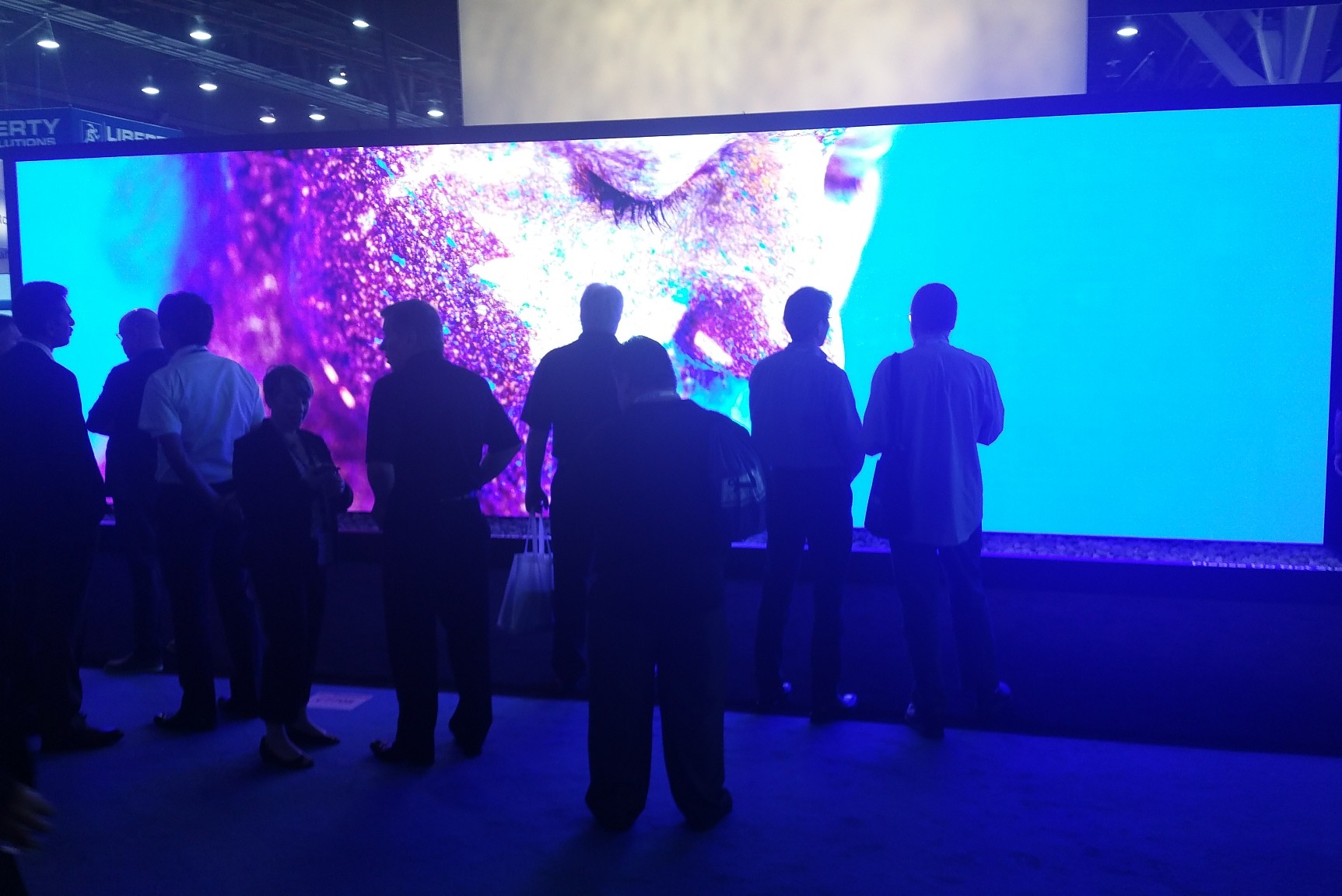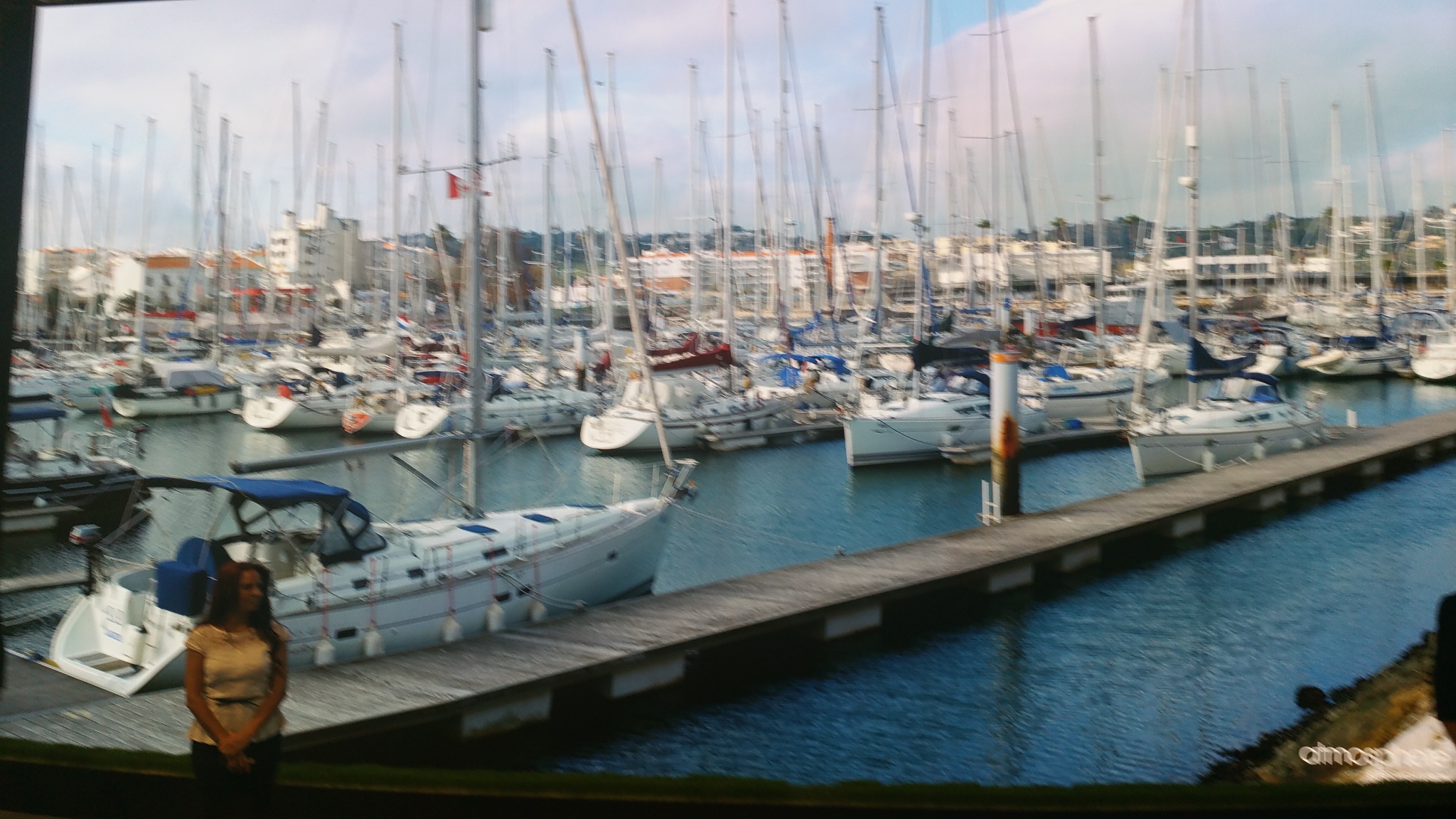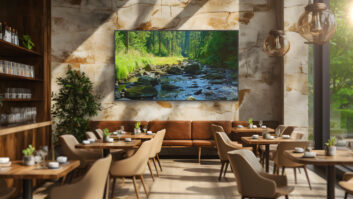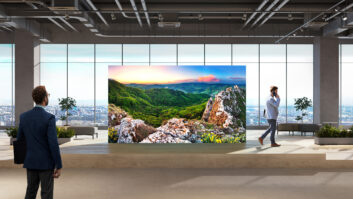
Large displays always figure strongly at AV tradeshows, and InfoComm 2016 was no exception.
Front and centre at the Sony stand was a massive example of the company’s new Canvas display system (main picture). The 8K x 2K (7680 x 2160) display stood 2.7m high and 9.7m long (equating to a pixel pitch of 1.26mm), and drew the crowds with its image quality. It’s based on the company’s Crystal LED Integrated Structure (CLEDIS), which uses microscopically fine LEDs that occupy less than 1% of the surface area – the rest is black, which helps to deliver high contrast.
The Canvas is built up from modules that measure 403mm x 453mm (320 x 360 resolution), have a brightness of approximately 1000 nits and a viewing angle of nearly 180º. Joins are invisible. A display controller can control up to a maximum of 72 units (3840 x 2160), and up to 20 controllers can synched together.
Sony says its Canvas technology offers “a leap forward in depth, contrast, colour, resolution and impact”. It is aiming the system at any environment requiring detailed large-scale video displays, including industrial product design and manufacturing, theme parks, museums, lobbies, boardrooms and broadcast studios.
Leyardlaunched the TWA Series of LED videowalls with an 8K installation of 64 individual 1.2mm pixel pitch units (pictured).
Designed to be a seamless drop-in replacement to legacy LCD and rear-projection videowalls, the TWA Series is made up of 54in, 16:9 flat panels that can be scaled, seamlessly, to almost any size. They are said to consume 35% less energy than standard LED videowalls.

They are designed for 24/7 mission-critical reliability. Redundant power supply and video source options are available to ensure uninterrupted operation in the event of a failure. Individual displays can be quickly serviced on site, and the larger 54in diagonal means fewer displays are needed to create a videowall, reducing potential points of service.
Improvements over prior products are said to include wider viewing angles with excellent off-axis uniformity, and advanced calibration to bring uniform colour and brightness uniformity across the largest videowalls.
According to analyst IHS Technology, sub-2mm direct-view LED is one of the fastest-growing videowall categories, and Leyard has sold more of these displays in the past three years than any other brand.
The 1.2mm TWA models are available now, with a 1.8mm model following later in the year.
New from SiliconCore was its first outdoor LED display, the Tulip Outdoor 3.9mm. The IP65, 4500-nit display shows strong contrast even in direct sunlight, has a viewing angle of 140º and can reproduce 281 trillion colours. Like all the company’s displays, it uses Silicon Core’s Common Cathode technology – which reduces power consumption by 30% compared with standard LED – and patented driver chip.
Eric Li, CEO of SiliconCore, commented: “High-resolution outdoor LED signage of less than 6mm pixel pitch has largely consisted of limited choices such as semi-outdoor LCD. The LCD platform however has limited effectiveness, brightness, and ability to face environmental challenges such as direct sunlight.”
LG Electronics was showing its brand new Dual-View Flat OLED Display – the first digital signage solution to offer OLED technology – scheduled to begin shipping in July.
As its name suggests, the Dual-View Flat OLED display is double sided, and at just 8.9mm thick has an extremely thin profile. The 55in 1920×1080 model can swap and mirror content on either side of the screen at the press of a remote control button.
Three different installation options are available: ceiling suspension, wall-mount and floor stand.
With OLED, each of the screen’s pixels can be turned on and turned off, delivering perfect blacks, according to LG.
Also on show was LG’s Dual-View Curved Tiling OLED display, which uses ultra-slim tiles to form customisable displays that link two, three or four tiles together.
Mitsubishi Electric showed a prototype Direct View narrow pixel pitch LED display specifically designed for command and control applications. The 130in diagonal 1.5mm pixel pitch screen had a resolution of 1920 x 1080 pixels. The pixels are comprised of 3-in-1 SMD LED packages developed specially for this application.
Mitsubishi says it has been looking into the use of narrow pixel pitch LED in command and control applications for over two years, in particular the issues of long-term colour stability of LED and potential operator fatigue due to excessive brightness. This work will continue ahead of the commercial launch of the new display in 2017.
Finally, NanoLumens took the opportunity to invite several hundred InfoComm attendees to the opening of its new visualisation centre in Las Vegas. “The best way for our customers and partners to understand what we can do for them is to see our solutions in-person. There is an awe-inspiring difference from what you can see in photos,” said NanoLumens CEO Rick Cope.







